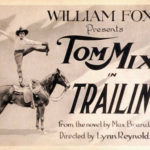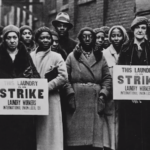Thomas Cripps: Scholar of African Americans in Film
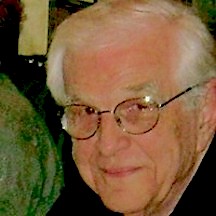 The history of African Americans in film would be far less well understood if not for the lifetime of research by Thomas Cripps.
The history of African Americans in film would be far less well understood if not for the lifetime of research by Thomas Cripps.
Cripps, the leading American scholar of the black presence in film, died in Baltimore from complications of Alzheimer’s disease on 17 September 2018, his 86th birthday.
A distinguished professor emeritus at Morgan State University, he wrote many important books, essays, and articles on African American film. Most noted among his books was Slow Fade to Black: The Negro in American Film, 1900-1942; others were Black Film as Genre and Making Movies Black: The Hollywood Message Movie from World War II to the Civil Rights Era.
Among his many influential essays were “The Negro Reaction to ‘The Birth of a Nation’,” which won the 1962 George P. Hammond Prize, and “Movies, Race and World War II,” which was awarded the 1982 Charles Thompson Prize from the Organization of American Historians and the Archives of the United States.
Cripps was also very active in television and radio production – for example, as the writer of Black Shadows on the Silver Screen (1975), a television documentary about pre-1950 “race films” that catered to black audiences. Ossie Davis narrated the film, which Stephen York directed.
Cripps spoke about the black history of American film throughout the United States and further afield, at many film and cultural institutions and universities, and received many grants and fellowships from such organizations as the National Endowment for the Humanities, the American Council of Learned Societies, and the Rockefeller Foundation Study Center.
Since his death, many colleagues have recalled fondly working or conversing with him, over the years. Those include another eminent film historian, Paul C. Spehr, who recalls here his long association with Thomas Cripps:
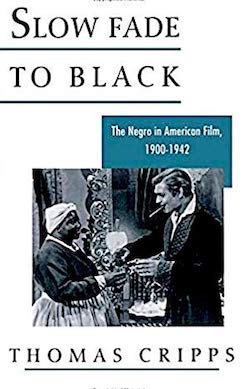 “Thomas Cripps, PhD was a native Baltimorean and a long time professor at Morgan State University in Baltimore. He was also the father of the study of the history of films for and by African Americans. His several books, especially Slow Fade to Black (1977) and his early papers were standard setters. He was a model of the ability of academics to contribute to moving image archives.
“Thomas Cripps, PhD was a native Baltimorean and a long time professor at Morgan State University in Baltimore. He was also the father of the study of the history of films for and by African Americans. His several books, especially Slow Fade to Black (1977) and his early papers were standard setters. He was a model of the ability of academics to contribute to moving image archives.
“I met Tom in the early 1960s when he began regular visits to the Motion Picture Collection at the Library of Congress where I worked. Tom was a frequent and welcome visitor for the next few decades. He mined our collections very thoroughly, but he was also friendly and companionable so we got to know each other well.
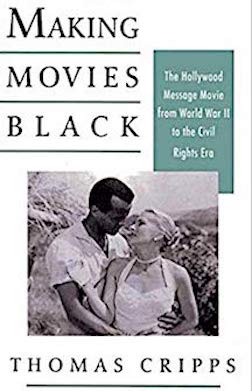 “Those of us responsible for the assembly and care of historical collections are always delighted when researchers find treasures among the mass of records we assemble. A good researcher doesn’t concentrate on the obvious material that is near the surface. They dig deep, looking for the obscure, but important things, sometimes tidbits, sometimes treasures. Tom was that sort of a scholar. When he came to the Library I think we had one film that had been made for African-American audiences. Our predecessors combined prejudice with contempt for what they regarded as commonplace. Tom changed our minds, showed — proved — that this was a serious mistake.
“Those of us responsible for the assembly and care of historical collections are always delighted when researchers find treasures among the mass of records we assemble. A good researcher doesn’t concentrate on the obvious material that is near the surface. They dig deep, looking for the obscure, but important things, sometimes tidbits, sometimes treasures. Tom was that sort of a scholar. When he came to the Library I think we had one film that had been made for African-American audiences. Our predecessors combined prejudice with contempt for what they regarded as commonplace. Tom changed our minds, showed — proved — that this was a serious mistake.
“When the archive program of the American Film Institute was launched in 1966-1967 building a collection of films for and by African-Americans was a priority. Tom was not only the inspiration for this; he was our valued advisor and guide. AFI’s Archivist, Larry Karr took this as a personal project, with notable success. Much had been lost, but the resources for serious understanding are now in archives and much more accessible. We were his other students and he taught us well and it is a significant part of his heritage.
“Tom prepared the way for the many scholars who have followed him. His articles and books raised the study of African-American cinema from the margins to the center of academic study. He is gone, but his was a life well spent. I am pleased to have known and worked with him.”
 Paul C. Spehr is a retired Assistant Chief of the Motion Picture, Broadcasting, and Recorded Sound Division at the US Library of Congress. Among his publications is his compilation American Film Personnel and Company Credits, 1908-1920 (McFarland & Company, 1996) and his biography of a seminal film pioneer, The Man Who Made Movies: W. K. L. Dickson (John Libby Publishing, 2008).
Paul C. Spehr is a retired Assistant Chief of the Motion Picture, Broadcasting, and Recorded Sound Division at the US Library of Congress. Among his publications is his compilation American Film Personnel and Company Credits, 1908-1920 (McFarland & Company, 1996) and his biography of a seminal film pioneer, The Man Who Made Movies: W. K. L. Dickson (John Libby Publishing, 2008).
Previous Post: 25 Additions to the National Film Registry
Next Post: Are Temporary Appointments a Threat to Archiving?

